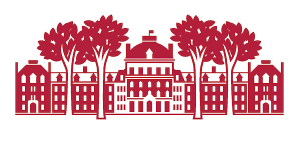- Teacher: Wol A Kang
- Teacher: Kirsten Speidel
- Teacher: Benjamin Ridgway
- Teacher: Jiajia Wang
- Teacher: Min Wang
- Teacher: Benjamin Ridgway
- Teacher: Jiajia Wang
Class Meeting Time 上课时间
1:15pm-2:30 pm on Mondays
Classroom: K330
Instructor:
Dr. Min Wang 王敏
Office: Kohlberg 301
Tel: (610) 690-2052
E-mail: mwang2@swarthmore.edu
Office hours: 11:30-12:30 (M); 2:00-3:00 (Th) & by appointment
Textbook and Recording:
《Beyond The Basics乐在沟通 》by Jianhua Bai, Juyu Sung and Janet Zhiqun Xing, Cheng & Tsui Company, Boston 2009.
Audio files for the texts are available on the course Moodle.
Chinese Table 中文桌子 (从第二周1月30日开始)
周二中午12:30-1:30pm, Sharples, Room 4
周五中午12:30-1:30pm, Sharples, Room 208 (王敏老师)
Dictionaries:
Line Chinese-English Dictionary
Line English-Chinese Dictionary
Yellow Bridge Chinese-English Dictionary & Thesaurus
1:15pm-2:30 pm on Mondays
Classroom: K330
Instructor:
Dr. Min Wang 王敏
Office: Kohlberg 301
Tel: (610) 690-2052
E-mail: mwang2@swarthmore.edu
Office hours: 11:30-12:30 (M); 2:00-3:00 (Th) & by appointment
Textbook and Recording:
《Beyond The Basics乐在沟通 》by Jianhua Bai, Juyu Sung and Janet Zhiqun Xing, Cheng & Tsui Company, Boston 2009.
Audio files for the texts are available on the course Moodle.
Chinese Table 中文桌子 (从第二周1月30日开始)
周二中午12:30-1:30pm, Sharples, Room 4
周五中午12:30-1:30pm, Sharples, Room 208 (王敏老师)
Dictionaries:
Line Chinese-English Dictionary
Line English-Chinese Dictionary
Yellow Bridge Chinese-English Dictionary & Thesaurus
Do you want to read Chinese news and articles for information? This course focuses on the skills of reading and synthesizing information in Chinese. Students will read authentic materials on contemporary Chinese society, economy, technology, or topics of students’ own research interests. This course is designed for heritage learners or advanced-level students who wish to move their reading skill to the next level beyond a Chinese language textbook. The class meets twice a week on Tuesdays and Thursdays (tentatively from 9:55-11:10am). Interested students should contact the instructor (Jiajia Wang, jwang5@swarthmore.edu) immediately.
- Teacher: Jiajia Wang
Contrary to our stereotypes about the silent, invisible woman of premodern China, women actually wrote and published their work in unprecedented numbers from the late 12th century to the early 20th century. This course will explore the literary and historical significance of this output, which mainly took the form of poetry and prefaces to poetry collections, letters, some drama, and novels in verse, and which was produced primarily by gentry women (e.g. women from elite families), courtesans, and nuns. Topics to be addressed include the social function of poetry and women’s literary networks, women’s relationship to the publishing market as writers, editors, and readers, the forces driving male interest in women’s writing at certain historical moments, and the changing ideas about what kinds of styles of past poets should be offered to boudoir poets as a repertoire of available choices to read and imitate.
In this course, we will primarily be looking at actual writings by Chinese women and exploring the historical and literary nexus of social, cultural, and biographical factors that led them to write and shaped their writing. We will, however, occasionally touch upon representations of writing women in Chinese literature and visual arts as well.
No prerequisites. All materials will be read in English translation.
In this course, we will primarily be looking at actual writings by Chinese women and exploring the historical and literary nexus of social, cultural, and biographical factors that led them to write and shaped their writing. We will, however, occasionally touch upon representations of writing women in Chinese literature and visual arts as well.
No prerequisites. All materials will be read in English translation.
- Teacher: Peng Xu
